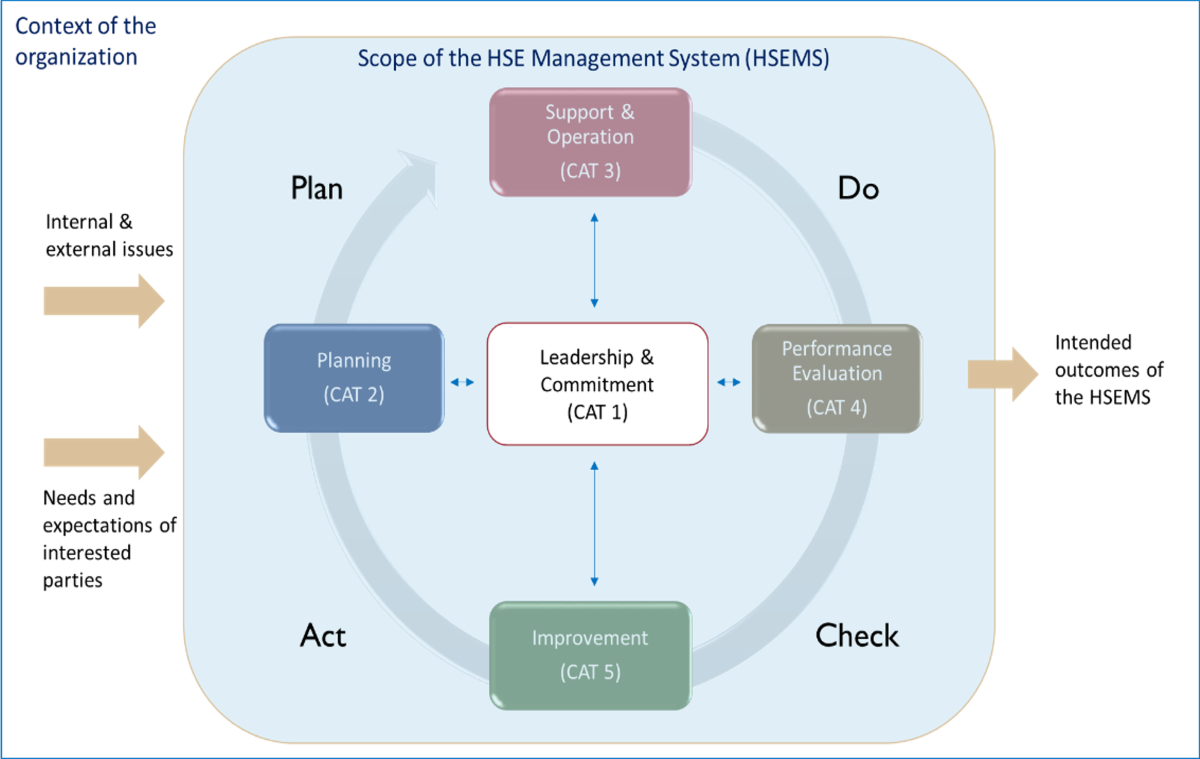At Tenaga Nasional Berhad (TNB), we are committed to upholding high standards in hazardous waste management. We proactively improve our waste management practices through rigorous internal and external environmental audits.
In 2019, TNB took a significant step forward in its commitment to health, safety, and environmental sustainability by establishing the Health, Safety, Environment Management System (HSEMS). This new system replaced the previous Safety Excellence Management System (SEMS), marking a strategic and systematic approach to managing workplace risks and ensuring continual improvement.
HSEMS provides a framework and reference for TNB and the subsidiaries to ensure the health and safety of employees, contractors and the public. Besides abiding to the rules and regulations, HSEMS aligns with international standards, namely ISO 45001 (Occupational Health and Safety) and ISO 14001 (Environmental Management). The HSEMS manual also serves as a key reference for TNB’s internal auditors during evaluations and assessments.
The Key Components of HSEMS
HSEMS is designed to effectively manage health, safety, and environmental (HSE) risks across TNB workplaces by aligning to international management system standards. It is built on the Plan-Do-Check-Act (PDCA) cycle, which supports continuous improvement, integrating regulations, policies, procedures, processes, action plans, and strategic activities aimed at hazard control and risk minimization, including those related to environmental impacts.
The components of HSEMS can be divided into five (5) categories as the following:
-
Leadership & Commitment
- Senior management demonstrating clear accountability.
- HSE policy established, communicated, and supported throughout the organization.
-
Planning
- Identification of HSE risks and environmental aspects.
- Assessment of legal and other compliance requirements.
- Setting objectives and targets.
-
Support & Operational Control
- Competency, training, and awareness programs.
- Emergency preparedness and response.
- Communication and documentation systems.
-
Implementation of control measures and safe work procedures.
Sub-Category 3A: Operational Control (Safety)
Control measures on safety requirements (i.e., electrical installation, and construction works)
Sub-Category 3B: Operational Control (Occupational Health)
Control measures on occupational health requirements (i.e., ergonomics, and hearing conservation)
Sub-Category 3C: Operational Control (Environment)
Control measures on environmental requirements (i.e., waste management and minimization, pollution control, and Green House Gases Management)
-
Performance Evaluation
- Monitoring and measurement of performance indicators.
- Internal audits and inspections.
-
Improvement
- Incident investigation and corrective actions.
- Management reviews and proactive risk management.

Figure 1: TNB's HSEMS Framework
Audit Programme Background
At TNB, there are three (3) types of environmental audit programmes: TNB HSE Corporate Audit, internal audit, and external audit. External audits are conducted by certified third-party bodies, while internal audits are carried out by the individual business entities themselves, with the scope limited to their respective operations. In contrast, the TNB HSE Corporate Audit functions as a centralized, company-wide audit mechanism, providing checks and balances across all TNB business entities.
In 2024, there were nine (9) business entities obtained ISO14001 certification which requires recertification by external auditors every three years. As part of their commitment to continuous improvement, these entities will continue to perform internal audits to uphold and enhance the effectiveness of their certified management systems.
The TNB HSE Corporate Audit serves as an independent internal audit function to ensure full compliance with hazardous waste legislation and other statutory environmental requirements. Audit locations are determined based on two key criteria:
- Risk exposure from environmental aspects and impacts associated with routine operational activities.
- Diagnostic evaluations based on past environmental incidents, regulatory notices, fines, or legal actions.
Following assessment of these factors, scheduled waste management and industrial effluent management were identified as the key focus areas for environmental audits in 2024.
To support systematic tracking and resolution of non-compliances, TNB implemented the e-HSE online system. This platform enables efficient logging, tracking, updating, and review of audit findings between auditors and auditees. The system's Nonconformance Report (NCR) module is widely used across TNB and its subsidiaries. As part of the continual improvement process, this centralized and reliable online platform is a valuable tool for ensuring timely and accurate monitoring, measurement, and analysis of non-compliances identified during audit activities.
Audit Programme Achievements
In 2024, the TNB HSE Corporate Audit on environmental management was conducted at two locations: the Fleet Management Department and TNB Power Generation Sdn Bhd. Based on the audit findings, a total of four (4) nonconformances were identified and logged in the online tracking system for corrective action.
In addition, internal audits were conducted by certified internal auditors across the nine (9) ISO 14001-certified business entities of TNB. These audits, carried out by trained and competent personnel, identified 198 improvement actions, comprising both opportunities for improvement (OFIs) and nonconformances (NCRs).
Meanwhile, external audits conducted by accredited certification bodies confirmed that all nine (9) business entities successfully maintained their ISO 14001 certification. These external audits identified 43 improvement actions, which are to be addressed before the next scheduled audit cycle.
Looking ahead to 2025, the TNB HSE Corporate Audit on scheduled waste management is planned for two TNB subsidiaries and is scheduled to take place in Q3 and Q4 of 2025.
| Type of Audit | Improvement Actions | ||
|---|---|---|---|
| Opportunity for Improvement (OFI) | Nonconformance (NCR) | Total | |
| TNB HSE Corporate Audit | 0 | 4 | 4 |
| Internal Audit | 172 | 26 | 198 |
| External Audit | 41 | 2 | 43 |
Table 1: List of environmental audit improvement actions across TNB
In summary, the implementation of the HSEMS marks a pivotal advancement in TNB’s journey towards a safer, healthier, and more environmentally responsible workplace. By integrating international best practices and fostering a culture of continuous improvement, the HSEMS strengthens TNB’s ability to safeguard its workforce, and uphold environmental stewardship.